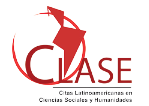Cookies as a way of collecting data on websites and user unconsciousness
DOI:
https://doi.org/10.5433/1981-8920.2023v28n4p289Keywords:
Data collection, Cookies, Privacy, Personal data protectionAbstract
Objective: The opacity in data collection on websites can affect the privacy of users, as companies often collect data without clearly informing what information is being collected, how it will be used and with whom it will be shared. This can lead to excessive data collection, which can be used for unauthorized purposes. In this scenario, this article aims to identify the possible cookies collected by the websites, in order to demonstrate the opacity present in the collection of this data, mainly in relation to the number and diversity of cookies, including the third parties involved in this process.
Method: The methodology consists of a descriptive research with a qualitative and quantitative approach. Bibliographical research was used as methods in order to explain the technical aspects of data collection by cookies; collection of data on websites, to demonstrate the possible cookies collected by websites during interaction with the user. For the identification of cookies, the Cookiebot Consent Management Platform was used as a technological resource. Result: A total of 776 cookies were identified on the analyzed websites, with the marketing category cookies and persistent cookies being the most representative, in addition to 208 third-party companies present in these cookies.
Conclusions: A variety of cookies were observed that are used by websites for data collection, this amount of cookies can reveal a lot of information about user activities and, consequently, threaten the privacy of individuals referenced in this data, without them being aware of the data collect.
Downloads
References
AFFONSO, E. P.; SANT’ANA, R. C. G. Privacy awareness issues in user data collection by digital libraries. IFLA journal, v. 44, n. 3, p. 170-182, 2018. DOI: https://doi.org/10.1177/0340035218777275
ARAÚJO, I.; ARAÚJO, I. Developing trust in internet commerce. In: CASCON '03: 2003 CONFERENCE OF THE CENTRE FOR ADVANCED STUDIES ON COLLABORATIVE RESEARCH, 2003, Toronto. Proceedings […] ACM, Oct. 2003. p. 1-15.
ARAÚJO, X. W. A. O uso dos cookies à luz do regulamento geral de proteção de dados: uma análise da conformidade. 2020. Dissertação (Mestrado em Direito e Gestão) – Universidade Nova de Lisboa, Lisboa, 2020. Disponível em: https://run.unl.pt/bitstream/10362/132676/1/Ara%C3%BAjo_2020.pdf. Acesso em: 10 mar. 2023.
AVELINO, S. R. A evolução dos mecanismo de rastreamento e vigilância instrusivos em clientes web. In: SIMPÓSIO INTERNACIONAL LAVITS, 6., 2019, Salvador. Anais [...] [Salvador: s. n.], 2019. Disponível em: https://lavits.org/wp-content/uploads/2019/12/SilvaAvelino-LAVITISS-2019.pdf. Acesso em: 10 jul. 2021.
BRAIN, M. How internet cookies work. [S. l.], 2000. Disponível em: http://computer.howstuffworks.com/cookie.htm. Acesso em: 31 jan. 2021.
BRASIL. Lei nº 13.709, de 14 de agosto de 2018. Dispõe sobre a proteção de dados pessoais e altera a Lei nº 12.965, de 23 de abril de 2014 (Marco Civil da Internet). Brasília, DF: Presidência da República, 2018. Disponível em: http://www.planalto.gov.br/ccivil_03/_Ato2019-2022/2019/Lei/L13853.htm#art1. Acesso em: 10 jul. 2022.
CAHN, A.; ALFELD, S.; BARFORD, P.; MUTHUKRISHNAN, S. An empirical study of web cookies. In: INTERNATIONAL WORLD WIDE WEB CONFERENCE, 25., 2016, Montreal. [Proceedings...]. New York: ACM, 2016. p. 891-901. DOI https://doi.org/10.1145/2872427.2882991 DOI: https://doi.org/10.1145/2872427.2882991
CASTELLS, M. A galáxia da internet: reflexões sobre internet, os negócios e a sociedade. Rio de Janeiro. Editora: Zahar, 2003.
CAVALCANTI, M. F. Cookies para quem? Entre o escambo digital e os direitos à privacidade e proteção de dados. Revista Acadêmica da Faculdade de Direito do Recife, Recife, v. 93, n. 2, p. 96-115, out. 2021. Disponível em: https://periodicos.ufpe.br/revistas/ACADEMICA/article/view/249887. Acesso em: 10 mar. 2023. DOI: https://doi.org/10.51359/2448-2307.2021.249887
COOKIEBOT. [S. l.], 2022. Disponível em: https://www.cookiebot.com/. Acesso em: 10 jul. 2022.
DAOUDAGH, S.; MARCHETTI, E.; SAVARINO, V.; BERNABE, J. B.; MARTINEZ, J.A.; GARCÍA-RODRÍGUEZ, J.; MORENO, R. T.; MARTINEZS, J. A.; SKARMETA, A. F. Data Protection by Design in the Context of Smart Cities: A Consent and Access Control Proposal. Sensors, [s. l.], v. 21, n. 21, 7154, 2021. DOI: https://doi.org/10.3390/s21217154
DHILLON, G.; OLIVEIRA, T.; SYED, R. Value-based information privacy objectives for Internet Commerce. Computers in Human Behavior, [s. l.], v. 87, p. 292-307, 2018. DOI 10.1016/j.chb.2018.05.043 DOI: https://doi.org/10.1016/j.chb.2018.05.043
EICHELBERGER, L. The cookie controversy. Introduction. [S. l.], 2011. Disponível em: http://www.cookiecentral.com/ccstory/. Acesso em: 17 jul. 2021.
EUROPEAN DATA PROTECTION BOARD. Guidelines 05/2020 on consent under Regulation 2016/679. Version 1.1. [S. l.]: EDPB, 2020. Disponível em: https://edpb.europa.eu/sites/default/files/files/file1/edpb_guidelines_202005_consent_en.pdf. Acesso em: 17 mar. 2023.
FREUDIGER, J.; VRATONJIC, N.; HUBAUX, J. Towards Privacy-Friendly Online Advertising. In: IEEE WEB 2.0 SECURITY AND PRIVACY (W2SP), 2009, Oakland. [Proceedings...]. [Oakland]: IEEE, 2009. Disponível em: https://citeseerx.ist.psu.edu/viewdoc/download?doi=10.1.1.296.9525&rep=rep1&type=pdf. Acesso em: 10 jul. 2021.
GONÇALVES, E. Desenvolvendo aplicações Web com JSP Servelets, Java Server Faces, Hibernate, EJB3 Persistence e Ajax. Rio de Janeiro: Ciência Moderna, 2007.
GONZÁLEZ, V. Las Cookies y el cumplimiento de la Ley Orgánica de Protección de Datos: Opinión. Advertising and Marketing Weekly, n. 1568, 2018.
GOOGLE. DoubleClick Digital Marketing platform. [S. l.], Jan. 2013. Disponível em: https://www.thinkwithgoogle.com/intl/en-apac/marketing-strategies/automation/doubleclick-digital-marketing-platform/. Acesso em: 10 mar. 2022.
GRANDE, R. E. de. Sistema de Integração de técnicas de proteção de privacidade que permitem personalização. 2006. Dissertação (Mestrado em Ciência da Computação) – Universidade Federal de São Carlos, São Carlos, 2006. Disponível em: https://repositorio.ufscar.br/bitstream/handle/ufscar/343/DissREG.pdf?sequence=1&isAllowed=y. Acesso em: 10 mar. 2023.
GRASSEGGER, H.; KROGERUS, M. The Data That Turned the World Upside Down. New York: Vice, 2017. Disponível em: https:// www.vice.com/en_us/article/4x4x8n/the-data-that-turned-the-world-upside-down. Acesso em: 10 jun. 2021.
HOOFNAGLE, C. J.; SOLTANI, A.; GOOD, N.; WAMBACH, D. J. Behavioral Advertising: The Offer You Can't Refuse. Harvard Law & Policy Review, [s. l.], v. 6, p. 273-296, 2012.
HORMOZI, A. M. Cookies and Privacy. Information Systems Security, [s. l.], v. 13, n. 6, p. 51-59, 2005. DOI 10.1201/1086/44954.13.6.20050 DOI: https://doi.org/10.1201/1086/44954.13.6.20050101/86221.8
INTERNATIONAL CHAMBER OF COMMERCE. ICC UK Cookie Guide. 2nd. ed. [S. l.]: ICC, 2012. Disponível em: https://www.cookielaw.org/wp-content/uploads/2019/12/icc_uk_cookiesguide_revnov.pdf. Acesso em: 10 jul. 2022.
IRELAND. Data Protection Act 2018. [Ireland]: ISB, 2018. Disponível em: https://www.irishstatutebook.ie/eli/2018/act/7/enacted/en/html. Acesso em: 10 mar. 2023.
LIN, D.; LOUI, M.C. Taking the Byte Out of Cookies: Privacy, Consent and the web. ACM SIGCAS Computers and Society, [s. l.], v. 28, n. 2, p. 39-51, June 1998. DOI https://doi.org/10.1145/276758.276775 DOI: https://doi.org/10.1145/276758.276775
MAGRANI, E. Entre dados e robôs. Ética e privacidade na era da hiperconectividade. 2. ed. Porto Alegre: Arquipélago Editorial, 2019.
MAYER-SCHÖNBERGER, V. The internet and privacy legislation: Cookies for a treat? Computer Law & Security Review, [s. l.], v. 14, n. 3, p. 166-174, 1998. DOI 10.1016/s0267-3649(98)80024-1 DOI: https://doi.org/10.1016/S0267-3649(98)80024-1
ODLYZKO, A. Privacy, Economics, and Price Discrimination on the Internet. In: ICEC2003: INTERNATIONAL CONFERENCE ON ELECTRONIC COMMERCE, 5., 2003, Pittsburgh. [Proceedings...] New York: ACM, 2003. p. 1-16. DOI http://dx.doi.org/10.2139/ssrn.429762 DOI: https://doi.org/10.1145/948005.948051
PALMER, C. Secure Session Management with Cookies for Web Applications. San Francisco: iSEC Partners, 2008.
PIERSON, J.; HEYMAN, R. Social media and cookies: challenges for online privacy. Info, [s. l.], v. 13, n. 6, p. 30-42, 2011. DOI: https://doi.org/10.1108/14636691111174243
QUEIROZ, A. A. L. A invasão de privacidade na Internet: um modelo de boas práticas e uma proposta interativa de proteção da privacidade por meio dos cookies. 2011. Dissertação (Mestrado em Ciência da Computação) – Universidade Federal de Pernambuco, Recife, 2011. Disponível em: https://repositorio.ufpe.br/bitstream/123456789/1298/1/arquivo1177_1.pdf. Acesso em: 21 jul. 2021.
ROHR, A. 'Cookie eterno' pode rastrear internauta e é impossível de apagar. G1, [s. l.], 2010. Tecnologia e Games. Disponível em: https://g1.globo.com/tecnologia/noticia/2010/10/cookie-eterno-pode-rastrear-internauta-e-e-impossivel-de-apagar.html#:~:text='Cookie%20eterno'%20pode%20rastrear%20internauta,apagar%20%7C%20Tecnologia%20e%20Games%20%7C%20G1&text='Evercookie'%20tamb%C3%A9m%20%C3%A9%20compartilhado%20entre,pol%C3%AAmica%20sobre%20privacidade%20na%20web. Acesso em: 17 jul. 2022.
SALESFORCE. [S. l.], 2022. Disponível em: https://www.salesforce.com/br. Acesso em: 17 jul. 2022.
SANT’ANA, R. C. G. Ciclo de vida dos dados e o papel da Ciência da Informação. In: ENCONTRO NACIONAL DE PESQUISA EM CIÊNCIA DA INFORMAÇÃO, 14., 2013, Florianópolis. Anais [...] Florianópolis: ANCIB, 2013. p. 1-21.
SIEBECKER, R. M. Cookies and the common law: are internet advertisers trespassing on our computers? Computer & Internet Law, [s. l.], v. 94, n. 3, p. 893-952, 2003.
SINGAPORE. PDPA Overview. Singapore: Personal Data Protection Comission, 2022. Disponível em: https://www.pdpc.gov.sg/Overview-of-PDPA/The-Legislation/Personal-Data-Protection-Act. Acesso em: 10 mar. 2023.
STEINFELD, N. “I agreetothetermsandconditions”: (how) do usersreadprivacy policies online? aneye-tracking experiment. Computers in Human Behavior, [s. l.], v. 55, p. 992-1000, 2016. DOI: https://doi.org/10.1016/j.chb.2015.09.038
TANENBAUM, A. S. Redes de computadores. 4. ed. Rio de Janeiro: Campus, 2003.
THE COOKIE COLLECTIVE. Five Models for Cookie Law Consent. London: CookiePro LLC, 2019. Disponível em: https://www.cookielaw.org/wp-content/uploads/2019/12/five-models-for-cookie-law-consent.pdf. Acesso em: 10 jul. 2022.
TOUBIANA, V.; NARAYANAN, A.; BONEH, D. Privacy Preserving Targeted Advertising In: NETWORK AND DISTRIBUTED SYSTEM SYMPOSIUM, 2010, San Diego. Proceedings [...] [S. l.: s. n.], 2010. Disponível em: https://crypto.stanford.edu/adnostic/adnostic-ndss.pdf. Acesso em: 10 jul. 2021.
UNIÃO EUROPEIA. Agência dos Direitos Fundamentais. Manual da Legislação Europeia sobre Proteção de Dados. Luxemburgo: Serviço das Publicações da União Europeia, 2014. Disponível em: https://www.echr.coe.int/Documents/Handbook_data_protection_Por.pdf. Acesso em: 17 jul. 2021.
WOJTOWICZ, P. Darknet e Deep Web: il Lato Oscuro del Web per la Privacy e la Protezione dei Dati. 2013. Tesi di Laurea (Coso di Laurea in Ingegneria Elettronica, Informatica e Telecomunicazioni) – Università di Bologna, Italia, 2013.
Downloads
Published
How to Cite
Issue
Section
License
Copyright (c) 2024 Daiane Marcela Piccolo, Elaine Parra Affonso, Ricardo César Gonçalves Sant'Ana

This work is licensed under a Creative Commons Attribution 4.0 International License.
A revista se reserva o direito de efetuar, nos originais, alterações de ordem normativa, ortográfica e gramatical, com vistas a manter o padrão culto da língua e a credibilidade do veículo. Respeitará, no entanto, o estilo de escrever dos autores. Alterações, correções ou sugestões de ordem conceitual serão encaminhadas aos autores, quando necessário.
O conteúdo dos textos e a citação e uso de imagens submetidas são de inteira responsabilidade dos autores.
Em todas as citações posteriores, deverá ser consignada a fonte original de publicação, no caso a Informação & Informação.














